Winter Soap Recipes: Plus How to Make Melt and Pour Snowflake Soap

Discover how to make winter soap recipes, including an easy melt and pour snowflake soap. This coconut oil soap recipe without lye is perfect for beginners and makes a wonderful homemade gift. Kids love the fun shape, and the coconut oil is naturally moisturizing for dry winter skin.
I change my skin care products with the changing seasons. In the summer, I like to use lighter oils to keep my skin healthy without making it too oily. In the winter, however, I use more nourishing oils to make things like this coconut oil soap recipe.
This DIY snowflake soap is an adorable winter craft for adults and an easy winter soap recipe. This melt and pour soap recipe is perfect for beginners to make. You can make this DIY soap recipe even if you’ve never made soap or any other DIY bath and body products. It’s a really great soap crafting project to get you started!
Winter Soap Recipes with Coconut Oil
Learn how to make soap without lye with this coconut oil soap recipe. Melt and pour soap is a great product on its own, but I like to customize it for the changing season and my skin needs.
For this particular batch of snowflake soap, I decided to add coconut oil. Coconut oil is an excellent oil for dry skin, so it’s perfect for winter soap recipes.
Is Coconut Oil Soap Good for Your Skin?
Yes, a coconut oil soap is good for your skin with some exceptions. Coconut oil nourishes and moisturizes your skin, so it’s a great oil to use in winter soap recipes for extra hydration.
How Coconut Oil Differs In Melt and Pour and Cold Process Soap
Adding coconut oil to a melt and pour soap base will transfer the properties of this oil to your soap. However, when making cold process soap, coconut oil has different properties when saponified. As a soap making ingredient in cold process soap, coconut oil is a highly cleansing oil that helps to produce a lot of bubbles.Therefore, a coconut oil soap with a low superfat may strip skin of essential oils, leaving it feeling tight and dry.
In order to compensate for the high cleansing properties coconut oil has in cold process soap, it is generally not used at more than 15% to 20% of a recipe. Alternately, if making a 100% cold process coconut oil soap, a higher superfat is factored into the recipe. A superfat of 20% or more is typical with a cold process coconut oil soap in order to offset the high cleansing value and replenish its hydrating properties.
Types of Coconut Oil for Soap Crafting
There are two types of coconut oil: regular coconut oil that melts at 76°F and fractionated coconut oil, sometimes referred to as MCT oil, which is always liquid at room temperature.
To make my DIY snowflake soap, I used regular coconut oil. This type of coconut oil comes both refined and unrefined variations. Unrefined coconut oil smells like coconut, while refined coconut oil is unscented. However, it is important to keep in mind that the natural fragrance of coconut oil rarely, if ever, translates into the final product when making soap. Therefore, I prefer to use the refined version of coconut oil, as it is generally cheaper to source.
Coconut Oil Soap Benefits
My snowflake soap is made using a coconut oil soap recipe without lye. By nature, a glycerin soap isn’t typically very hydrating, especially if it contains detergents or synthetic foaming agents. However, this can vary depending on the base.
If you are unable to source a quality soap base, or prefer a less expensive soap, you can add a little bit of coconut oil to your melt and pour soap base to boost its skin care properties.
As it is rich in fatty acids, coconut oil provides the following benefits when added to melt and pour soap:
- Coconut oil increases the hydrating properties of soap. (As soap is a wash off product, it cannot be considered moisturizing.)
- It helps to nourish skin and may reduce inflammation.
- Due to its composition it can help to promote healing.
- The antimicrobial properties can help to reduce symptoms associated with bacterial and fungal growth.
How Much Coconut Oil Can I Add to a Melt and Pour Soap Base?
You can add coconut oil to a melt and pour soap base. However, you may want to know how much coconut oil you can add to melt and pour soap.
- You can use up to 1 teaspoon of coconut oil per pound of soap in a melt and pour soap recipe.
- If you add more coconut oil than recommend, the bar of soap can get soft. It can also significantly decrease the lather.
Is Lye Necessary for Soap?
Yes, lye is necessary to make true soap. (True soap being a combination of fats and an alkali.) However, all the lye used to make soap is used up in the saponification process when making cold process or hot process soap. This process uses the alkali (lye) to turn the fats (soap making oils and butters) into soap. When formulated correctly, there is no lye leftover in a finished bar of soap. (You can learn more about how to make cold process soap with lye here.)
However, as not everyone wants to work with lye, you can make soap without lye by working with a premade melt and pour soap base. These glycerin soap bases are made in one of two ways. They are either formulated using detergent foaming agents to create a syndet type soap (similar to Dove’s beauty bars) or with fats and lye to create a natural, meltable true soap base.
By using a premade melt and pour base, you can create easy soap recipes without lye. This is not because true soap doesn’t need lye to be created in the soap making process, but because has already been used in the formulation to make melt and pour soap.
As a result, you can make creative winter soap recipes at home without having to work with lye as part of your crafting process. There’s no need to add any lye to this glycerin soap recipe simply because that step has already been completed. Therefore it’s safer to make at home around children and pets. It also does not require extra safety precautions or equipment.
How Do You Make Homemade Soap Without Lye?
Although all homemade soap has lye, assuming it fits the definition for true soap, you can make an easy soap recipe without lye at home.
There are two basic ways to do this. One is by rebatching an existing soap base and heating it a liquid and other additives on the stove. Another is by using melt and pour soap base. Melt and pour soap, also called glycerin soap, is a premade base that is already made with water, oils and lye. This type of soap base melts when heated.
Here is how to make a homemade soap without lye using a glycerin soap base:
- Cut the soap base down into chunks about 1″ in size.
- Heat the soap to melt it. You can do this heating the soap in the microwave in 30-second increments until melted. Alternately, you can also melt the soap base in either a double boiler or crockpot.
- Once melted, add any additives or color to the soap. This may include a liquid soap colorant and certain botanicals, as well as an essential oil or fragrance oil for scent.
- After the additives have been mixed into the melt and pour soap base, you simply pour the soap into the mold. ( Silicone molds work great for this step.)
- Finally, unmold the soap once it has hardened and cooled completely.
My snowflake soap recipe, which can be found below, is an easy melt and pour soap recipe that you can make without lye.
If you are new to soapmaking, you may also want to refer to these easy melt and pour soap recipes for beginners.
Essential Oil Blends for Winter Soap Recipes
You can use your favorite essential oil blends to naturally scent your melt and pour soap recipes. I recommend creating a master blend in a small 5 mL bottle and then using that blend in this snowflake soap recipe. Keep in mind, however, that some essential oils may discolor the soap.
If you would like to formulate your own blends for your melt and pour soap recipes, these winter essential oil blends make great choices for your soap crafting projects.
Or try one of these recipes to use in my snowflake soap recipe:
- Winter Nights: 5 drops bergamot + 5 drops black spruce
- Happy Holidays: 2 drops pine + 2 drops cinnamon leaf + 2 drops sweet orange + 2 drops ginger
- Fresh Snow: 2 drops clove bud + 4 drops cardamom + 4 drops fir needle
- Winter Air: 4 drops rosemary + 4 drops lemon + 2 drops lime peel
On the other hand, if you prefer to buy a premixed essential oil blend for your winter soap recipes, I recommend these easy options:
Snowflake Soap Molds for Winter Soap Recipes
There are several different molds that you can use to make snowflake soap. I prefer a smaller soap molds when I make homemade soap to give as gifts. It allows me to make more bars from a glycerin soap recipe, using the same amount of melt and pour soap base. They also are the perfect size for soap favors, and people like to keep guest size soaps by their sink.
In addition, I also to like to use silicone molds for soap crafting. This is simply because they are easier to remove from the mold than a plastic mold. When you use a silicone soap mold to make homemade soap, the soap turns out of the mold when hardened. Alternately, you often have to freeze soap in a plastic mold to get it to pop out of the plastic.
Here are some silicone molds you can use to craft your winter soap recipes:
Snowflake Soap Ingredients
To make snowflake soap using a melt and pour soap base, you will need the following ingredients:
- 1 lb. (16 oz.) White Melt and Pour Soap Base: You can use either a clear or white soap base. If you use a white base, you can omit the mica powder.
- 10 drops Essential Oil Blend: I naturally scented this easy melt and pour soap recipe with a winter essential oil blend. You can choose your favorite essential oil blend above.
- 1 teaspoon Mica Powder: Mica powder can be used to either give your snowflake soap color or to add shimmer to your winter soaps. As I used a white soap base to make my snowflake soaps, I used a pearl white mica to create a sparkly winter soap.
- 1 teaspoon Coconut Oil: You will add coconut oil for its hydrating benefits for skin.
Snowflake Soap Making Tools
A glycerin soap recipe doesn’t use a lot of tools or special equipment. However, you do need a few common kitchen tools to make soap without lye.
Here are the tools you need to make this easy melt and pour snowflake soap:
- Silicone Soap Mold: I used this snowflake mold for my melt and pour soap recipe with essential oils.
- Large Heat Safe Glass Bowl: A heat safe glass bowl or measuring cup is required to melt the soap. You can use a microwave or a double boiler to melt your soap. (Some people also prefer to use a small Crock Pot when making soap.)
- Small Glass Bowl: You will use a second bowl to mix the melted coconut oil and mica powder, which is added to the melted soap base.
- Measuring Spoons: Measuring spoons are used to measure out the mica powder and coconut oil called for in this winter soap recipe.
- Spoon or Spatula: A spoon or spatula is needed to stir the melt and pour soap base after you add the additives to the melted soap.
- Sharp Knife: You need a knife to cut up the soap base into cubes.
- Digital Kitchen Scale: A digital scale is used to weigh out the soap base. If you purchased your soap in one pound bars, or bought a 2 lb. soap base that is scored, you don’t need to use a scale.
How to Make Winter Snowflake Soap
Here is how to make an easy snowflake soap for winter:
- Weigh out the amount of soap called for in the recipe.
- Then cut the melt and pour soap base into one inch cubes. Combine the chunks of soap in a heat safe glass bowl or measuring cup.
- Microwave the cubed soap base in 30 second bursts, stirring between each interval. Repeat as needed until the soap is completely melted.
- While the soap melts, measure out the mica powder and melted coconut oil using measuring spoons. Combine the ingredients in a small bowl. Stir until mixed well.
- Once the soap base has melted, mix the mica and coconut oil mixture into the melted soap.
- Now add the essential oil blend to the melted soap base. Stir well to combine.
- Next, pour the melted soap evenly into all six of the snowflake mold cavities. (If the soap is too hard to pour, you can microwave it for 10 seconds to reheat.)
- Allow the soap cool for at least 45 minutes.
- Once the soaps have cooled and fully solidified, unmold the soap bars.
- Finally, wrap the winter snowflake soap bars tightly in foodservice film to protect from moisture. Alternately, you can wrap these soaps in cellophane bags and tie with ribbons to give as homemade gifts.
Tip: To remove air bubbles on soap after pouring, you can spritz the tops of the melted soap in the mold with isopropyl or rubbing alcohol.
Tip: You can speed up the time it takes to cool the soap. Simply place the soap mold onto a cutting board before pouring the melted soap. After the soap is poured, using the cutting board to transfer the soap to your refrigerator.
Need ideas for packaging your winter soaps? Try these soap packaging ideas for your snowflake soaps or one of these creative ways to package soap.
More Winter Soap Recipes
For more winter soap recipes that use a melt and pour soap base, try these other soap crafting projects:
Enjoyed the project?
Suggested materials:
- Melt and pour soap
- Mica powder
- Coconut oil
- Essential oil blend
The author may collect a small share of sales from the links on this page.



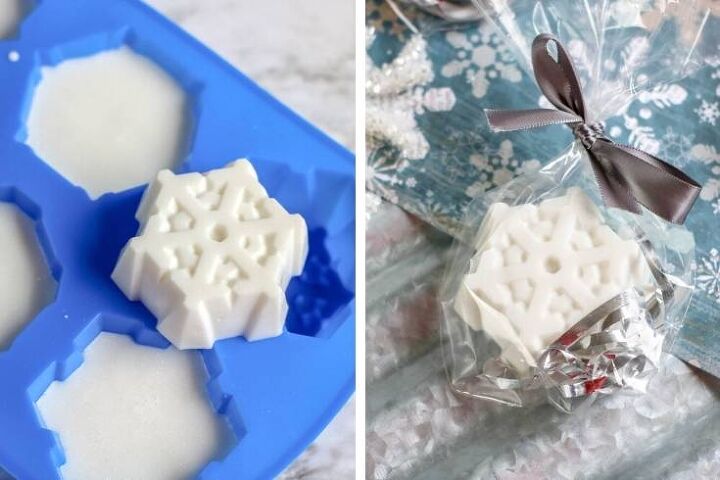











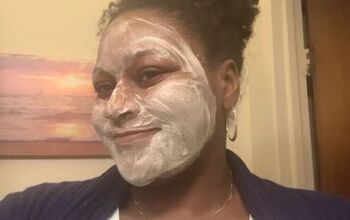
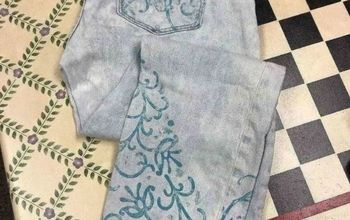

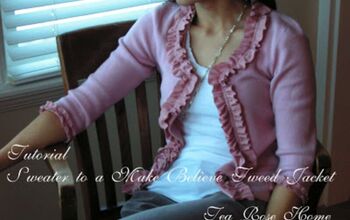


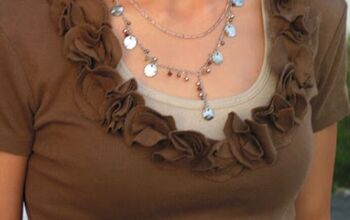




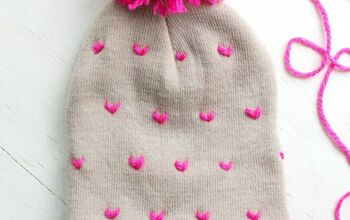

Comments
Join the conversation
Not everyone can use coconut oil! Like myself, there are thousands of people who are allergic to coconut! Wish people would have substitute oils etc for projects!